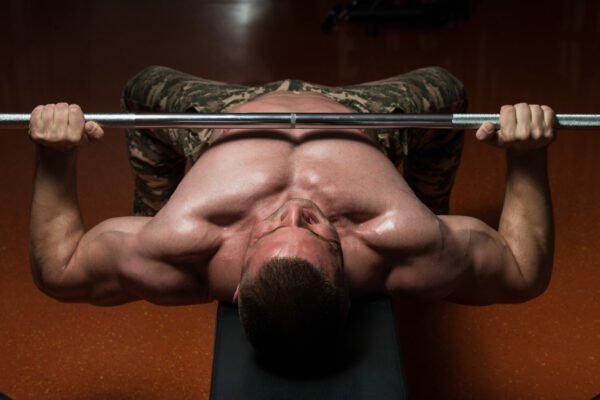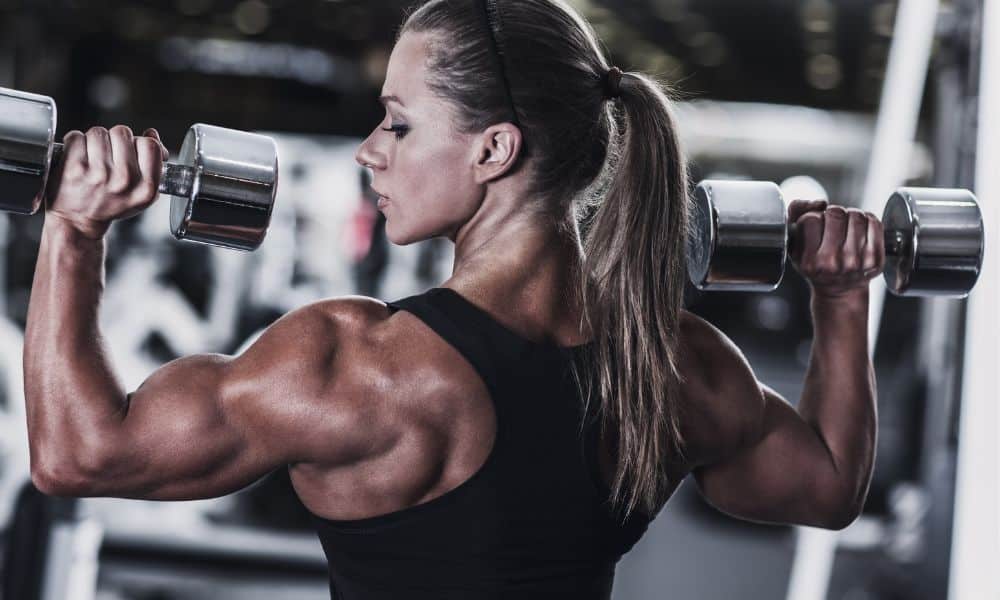Are you burning to know how many sets and reps you need to do for bodybuilding? If you’re a bodybuilder, you often ask yourself this question. How many sets and reps should I do? It’s a difficult question without knowing more about your goals and fitness level. But in general, you should strive for 8 to 12 reps of 70 to 80% of your one repetition max. Also, you should aim for 3 to 10 sets for each body part.
Sets and Reps to Use
The number of sets and reps you do for bodybuilding depends on your goals and the type of exercise you are doing. Knowing how to use these two tools effectively can help maximize your results in the gym. In addition, your body will keep you informed by how it responds to the workout. Some people can reach the high end of the range (3 to 10 sets), while others have to work at the low end. Working out is no different than anything else in life. Your workout is based on your genetics, environment, and behaviors.
Muscle Building
To gain muscle and strength, focus on doing fewer sets with heavier weights and more extended rest periods between sets. For example, if you’re bench pressing, do three to ten sets, each consisting of eight to twelve reps. Rest periods should be one to two minutes between sets so your muscles can recuperate before performing another set at maximum intensity. You may find that experimenting with different weights, rest times, and rep counts takes some experimentation to find what works best for you—and that’s okay! Take notes during your workouts to track your progress over time.
Muscle Definition
If burning stomach fat is more up your alley, focus on doing more sets with lighter weights at higher rep counts. For example, if you’re squatting, aim for 12-20 reps using a HIIT workout program or German Volume Training. This type of workout will help improve muscle shred while helping burn fat and calories. Additionally, don’t forget about stretching! Stretching before and after workouts helps reduce soreness and can even help improve flexibility over time.
Rest and Recovery
You will always need to balance your workout and recovery period. Therefore your reps and weight are dictated by your goals, while your sets are determined by your recovery period. You should always aim for 8 – 12 reps to build muscle and 70 – 80% of your one rep max.
But when it comes down to how many sets you should perform, look for a range that allows you to recover 100% in time for your next workout. Then, you can track your performance and see if your body responds positively to your training. If you feel stronger, you are fully recovered, but if you feel tired physically or mentally, you are not fully recovered.
Not fully recovered can cause you to dread your workouts and lead to injury. Therefore if you are not excited about your next training, you are probably overdoing it. Your body has a way of letting you know when you are overdoing a workout.

Progressive Overload
Use progressive overload to increase your sets to optimize your ability to recover from your workout in time for your next workout. If you are a beginner, start on the low in of the set range. Begin with three sets and see how your body responds to your workout. After a couple of weeks, increase it to 4 sets. Keep increasing your sets until your body stops positively responding to the progressive overload.
To use progressive overload correctly, record your results and observe how your body feels after and before your next workout. You should not be sore or tired before a workout. Also, you should not be mentally dreading a workout.
Two of the most significant factors of a workout are consistency and compliance. To be consistent and compliant, you need to feel good mentally and physically every week for your training. Therefore, start slowly and build the right way to continue seeing results. The goal of exercise is to make you feel better, not to beat you up.
Optimal Sets and Reps
Once you start feeling tired or stop looking forward to working out, you know you have passed the top end of your set and rep range. Don’t be afraid to dial it back if you cannot land softly at your optimum capacity.
For example, if you tried eight sets and your body feels beat up, or you start to dread going to the gym, then drop down to 7 or 6 sets. You can always increase the reps to get the right amount of intensity.
There is an optimum level you should strive for where you get stronger each workout and look forward to your workouts. This optimum level depends on genetics and behaviors such as diet and sleep. There is no magic number that everyone can use to see results. Instead, it is a journey where you start at the beginning and increases your sets and reps through progressive overload until your body responds negatively to your workout.
Rest Days
Besides your sets and reps, your rest days will determine how fast your recovery and how hard you can workout. Therefore focus on the quantity and quality of your rest days. The more days you rest, the more you will recover for your next workout. Like sets and rest, there is an optimum number of days to get the best results from your rest days.
When optimizing results, balance your reps with your rest time during workouts and your sets with your rest days after workouts. Building muscle is about breaking down muscle tissue and building it back up.
Therefore bodybuilding is about reps, sets, rest time, and rest days when it comes to your workout. One of the best things you can do out of the gym is get the right amount of sleep and the best quality. Don’t let your rest days after workouts sabotage your workout time in the gym.

Always on the Clock
Once you leave the gym, you are still on the clock. Your body is racing to recover to be ready for your next workout. The intensity of your workout, which is determined by the weight, reps, rest time, and sets, determines how much time your body will need for your next training. Also, your diet and sleep will play a significant role.
Many new lifters are unsuccessful because they are unprepared for their next workout. They know how to plan and do a workout but don’t know how to do it outside the gym. This is because you are always on the clock, and everything you do determines your readiness for your next workout. Therefore make sure you are eating right, getting enough sleep, and resting enough days for the type of workout you have performed.
High-intensity workouts require more rest days than low-intensity workouts. When you work too hard, give yourself more days to recover. Learn how your body responds to sets and reps inside and outside the gym.
You should know how your body will feel after performing 3, 4, 5, or 6 sets. You don’t need to ask someone else how your body feels after completing a certain amount of reps and sets. Your body will tell you. All you need to do is pay attention and adjust your workout to get better results next time. That could require you to add or reduce sets.
The Last Word on How Many Sets and Reps You Need to Perform for Bodybuilding?
Ultimately, how many sets and reps for bodybuilding you do depends on what kind of workout routine fits best into your life, fitness level, and goals. Everyone’s body is different, so it’s essential to listen to your body when deciding what works best for you – heavy or light lifting – both crucial components of an effective workout routine!
But by using proven principles like progressive overload, you can reach your goals and find the right reps and sets. With patience, consistency, a strong mindset, and proper form during exercises, anyone can achieve their bodybuilding fitness goals in no time! Happy lifting!




